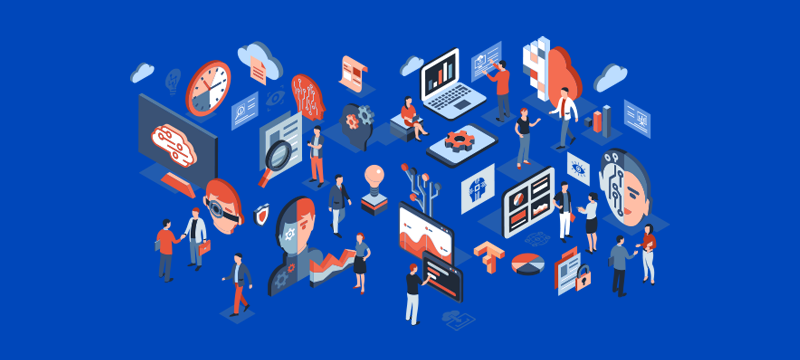Not only is technology constantly evolving, the pace at which it evolves accelerates. For companies wanting to stay ahead of the field, this makes it even more important to keep an eye on new trends and developments so they don’t miss out on the next big thing. To give you an idea of the kind of developments taking place, here are some of the new technologies driving digital innovation, some of which you may never have heard of before.
Cloud-native platforms
A cloud-native platform is used by companies to build new application architectures. By automating infrastructure provisioning and configuration, it dynamically allocates and reallocates resources depending on the requirements of the application, providing an agile, elastic and resilient infrastructure that enables companies to rapidly respond to change.
Data fabric
Today, businesses gather data from lots of different places. Many also have complex IT systems, with hybrid clouds and multiple vendors. Data fabric is an IT infrastructure and a set of data services that enable companies to make use of all that data everywhere, regardless of where it is stored or what format it is in. It works by standardising data management practices across multi-cloud, in-house and even edge (e.g., IoT) devices. The infrastructure is so advanced, it can even use analytics to recommend where data should be used and changed.
Cybersecurity mesh
Such is the threat of cybersecurity that many companies make use of a wide range of tools to protect their systems. Many of these are widely distributed, standalone tools that work independently, often leaving gaps in a company’s defences. A cybersecurity mesh is a security infrastructure that integrates these separate tools into a comprehensive architecture that enhances business-wide security both in the cloud and off-cloud environments.
Privacy-enhancing computation
The large amounts of personal data held by businesses pose significant security and compliance challenges. While data is normally stored securely using encryption, it is as its most vulnerable when it is being processed. The aim of privacy-enhancing computation is to ensure that the data is secure during processing when it is in a less trusted environment. To do this, it makes use of various privacy-protection methods which ensure compliance but enables the data’s value to be extracted.
The distributed enterprise
A distributed enterprise is not a technology, but a new way for organisations to configure their delivery model for the modern age and which will rely on the cloud to operate effectively. This is needed because modern organisations are becoming more distributed in how they operate. With hybrid/remote working and customer demand for virtual experiences, both employees and customers require access to systems and services at any time from anywhere, and this means networks will need to evolve. AI is being used to develop a ‘remote-first’ model that enhances staff experiences, digitalises customer touchpoints and creates new product experiences.
Composable applications
In order to build better applications and do so quicker, it makes it easier for developers if they could take the best parts of other applications and fit them together into something new. Composable applications are built for that purpose, as they are developed using a modular programming approach. Each module can then be used and reused in other applications to speed up future development.
Each module in a composable application is called a Packaged Business Capability (PBC). A specialised form of micro service, it has a specific business capability that comprises data schema, services, APIs and event channels.
Decision intelligence
Data insights and data-driven decision making have been part of the IT vocabulary for some time. Decision intelligence is the evolution of the process, designed to provide companies with even better and more advanced ways to make decisions. It does this by using AI and analytics to develop a set of processes for decision making, including learning from previous decisions and refining them. While it is currently thought of as a tool to support human decision making, in the future, it may even be able to automate it.
Hyperautomation
As organisations’ critical systems increase in number and become more complex, the burden on IT staff to monitor and maintain them has grown exponentially. Hyperautomation seeks to minimise this burden by automating as many processes as possible. The practice of hyperautomation requires businesses to identify what processes to automate, deploy the most effective automation tools, reuse automated processes to drive agility and use ML and AI to extend the tool’s capabilities. This way, scalability, self-monitoring and in some cases, self-healing can be automated too.
To some extent, hyperautomation will involve the use of autonomic systems. These are self-managed systems that learn from their environments and automatically update their algorithms to support new situations, improve performance and even defend systems from cyberattacks.
Conclusion
While this post may have overwhelmed you with new IT terminology, these technologies are already being deployed by organisations to great benefit. Indeed, Gartner believes that, over the next five years, they will drive digital business and innovation. Underpinning them all, however, will be the adoption of cloud infrastructure and the deployment of tools like AI and ML.
For information about our cloud solutions, visit our Cloud Hosting or Enterprise Solutions pages.



